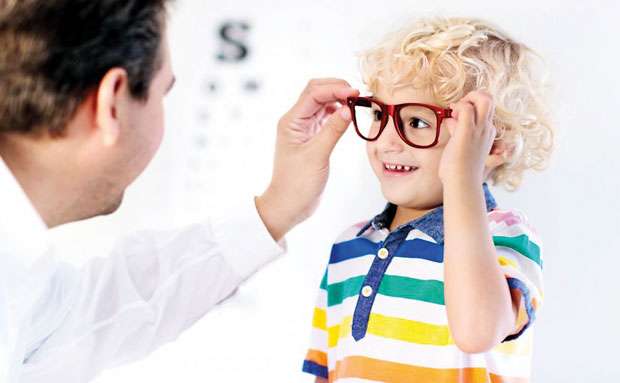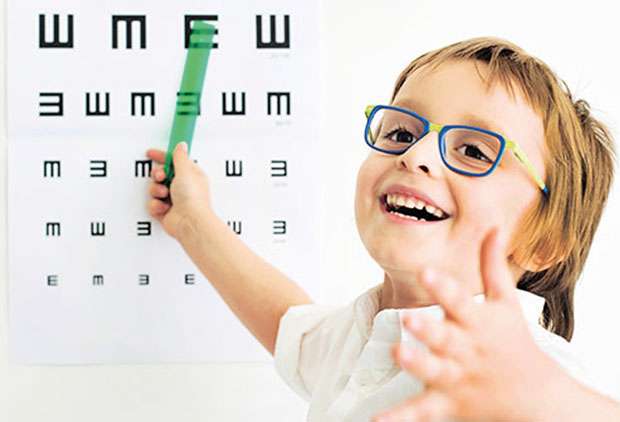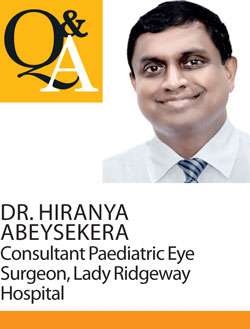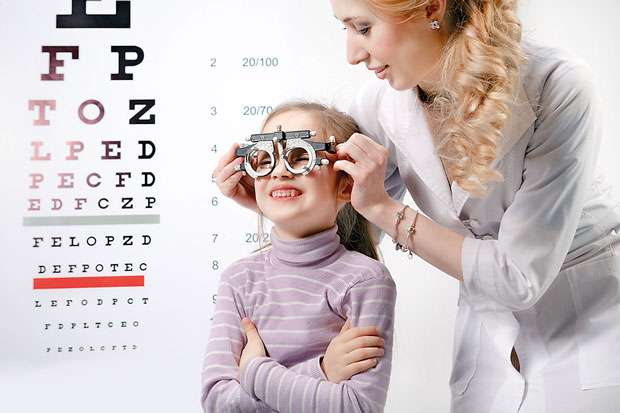Reply To:
Name - Reply Comment

 The health of children is a key factor which determines their outcome in childhood achievements, which form the foundation for a successful future. Good vision is perhaps the most important parametre in all health indices which helps a child in not only academic activities, but also in extra curricular activities; for example sports. “There are more than 100 children who come for investigations and treatment for a variety of eye ailments to the Eye Clinic at the Lady Ridgeway Hospital” says Dr. Hiranya Abeysekera, Consultant Paediatric Eye Surgeon with whom we are having the health discussion in this week’s issue of the Health Capsule.
The health of children is a key factor which determines their outcome in childhood achievements, which form the foundation for a successful future. Good vision is perhaps the most important parametre in all health indices which helps a child in not only academic activities, but also in extra curricular activities; for example sports. “There are more than 100 children who come for investigations and treatment for a variety of eye ailments to the Eye Clinic at the Lady Ridgeway Hospital” says Dr. Hiranya Abeysekera, Consultant Paediatric Eye Surgeon with whom we are having the health discussion in this week’s issue of the Health Capsule.
Following are excerpts of an interview done with Dr. Abeysekera.
Q How do you recognise whether a child is having a problem with vision?
It is not easy. But there are some reasonable clues which help you to look in children and see whether they have eye problems. School teachers are very good in picking children with visual problems. If your child’s teacher warns you to get your child’s eyes checked, please do not ignore this call. Children with vision problems usually struggle to copy what’s on the blackboard when they sit at the back row. They are much comfortable in a front row seat. At home, some children may go very close to the television, squeeze their eyes as if they are trying to ‘clear’ the images or they may shed tears when they try to focus on the screen. Some children with vision related problems refuse to go out in the sun as they are sensitive to light. Children don’t lie. If they say they can’t see, they can’t actually see. It is the duty of adults to find out why they can’t see.
A vast majority of children will have some degree of increment of the power of the lenses. This is similar to the ‘increment’ of their shoe size. We are just compensating for the growth of the eye ball to maintain good vision which is a mandatory requirement for their future endeavours

Q Are there any long term effects of childhood eye problems?
Childhood is a lifetime opportunity. Once it is gone, it will never return. During childhood, the maturation of the nervous system and visual system continues almost unto 18 years. But most of the neural maturation important for vision is completed by the age of 8. Therefore, if a disruption to the process of visual development occurs before 8 years and if it is not treated promptly it is going to create lifetime defects with vision. If so, the children will be at a disadvantageous position at certain exams, driving licence test and job interviews etc.
Q What are the reasons for children to develop eye problems?
Firstly, it is because the differences in the shape of the eye ball. I always say as each individual’s face is unique, the shape of the eye ball is also unique. What our eye ball does is it captures light rays coming from an object and focuses on the “yellow spot” of the retina. The yellow spot of the retina has special nerve endings called photoreceptors and the energy in the light is converted to a nerve signal and transmitted to the special centre for vision in the brain. For us to generate a clear image in the brain the focussing of light rays on the yellow spot has to be good. If the shape of the eye ball is not ‘normal’ then focusing is also going to be erratic and the image formed is going to be blurred.
Q What are the other causes which can result in vision problems in children?
The structure of the eye ball and its nerve connections to the brain are very important in gaining and maintaining good vision in a child. All our body organs form during our stay in the mothers womb. The formation of the eye occurs very early during the pregnancy. Infections affecting the mother during the first few weeks of pregnancy, such as Rubella, can cause defects in the formation of the eye. Genetic changes which affect the ‘manufacturing’ of the eye also affect the structure of the eye and can cause problems with vision. Trauma is a more common cause which can affect the structure of the eye ball which can reduce the vision. Children play with whatever they get hold of. Some things such as sharps, springs and bullets can cause damage to the eye. Once the eye is damaged we can repair the structure to some degree, but not hundred percent. We can never restore the vision of a damaged eye.
Children with vision problems usually struggle to copy what’s on the blackboard when they sit at the back row. They are much comfortable in a front row seat. At home, some children may go very close to the television, squeeze their eyes as if they are trying to ‘clear’ the images or they may shed tears when they try to focus on the screen
Q Most importantly, how do you diagnose vision problems in children?
Eye examinations are done by health professionals in children in various occasions. For an example, at birth every child’s eyes are checked by the paediatrician. The vision is checked in all students in grade 1,4 and 7 in government schools. The vision can be checked in any child or any infant. Techniques are used according to their ages and abilities. There is nothing called “this child is too young to get the eyes checked”.

Q Why do children have to wear glasses?
As I told before, problems with distant vision are common in children. What happens in ‘short sightedness’ or inability to see far is that their eye ball cannot focus light rays on to the retina. If there is no proper focusing on the retina, the signals to the brain are also going to be incorrect. What we are achieving with glasses is that they help the person’s eye to focus properly on the retina, so the image formation on the retina is clear. Thus the brain receives a clear image which can be processed properly to provide for good vision.
Q What are the advices you give to kids who wear glasses?
Kids wear glasses for reasons that are different from adults. Adults may wear them when they read or use a computer. But kids need to improve their level of vision. So kids have to wear glasses all the time when they are awake. This helps to improve the vision at the level of the brain. Kids who don’t wear glasses all the time will have problems in future events such as when facing a driving licence test. Children need to see the doctor or optician more frequently too.
I advice children up to 12 years to get their glasses checked every 3 to 6 months depending on their vision. Children older than 12 years can have their glasses checked once every nine to twelve months. This is because we need to adjust to their growth. Like any other organ in our body, our eye ball also continues growing. Glasses made in keeping with the size of the eyeball may not be suitable one year later. So we have to recheck more frequently and compensate for their growth.
Q What happens if the thickness of the glasses increases?
Thickness of the glasses or the power of the lenses changes with their age as I have stated before. A vast majority of children will have some degree of increment of the power of the lenses. This is similar to the ‘increment’ of their shoe size. We are just compensating for the growth of the eye ball to maintain good vision which is a mandatory requirement for their future endeavours. I always say if the vision is good with glasses, the power of the lenses are immaterial.